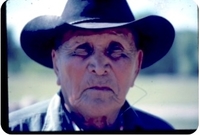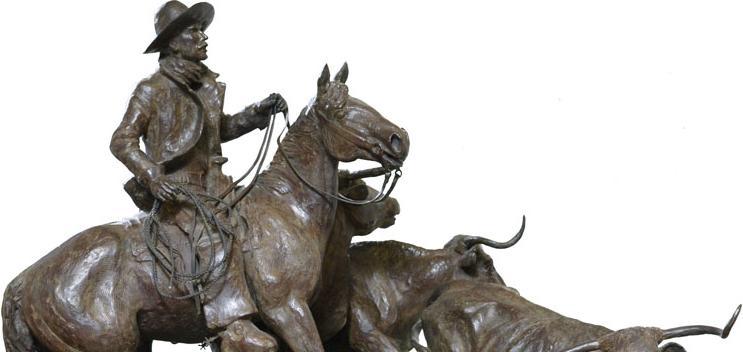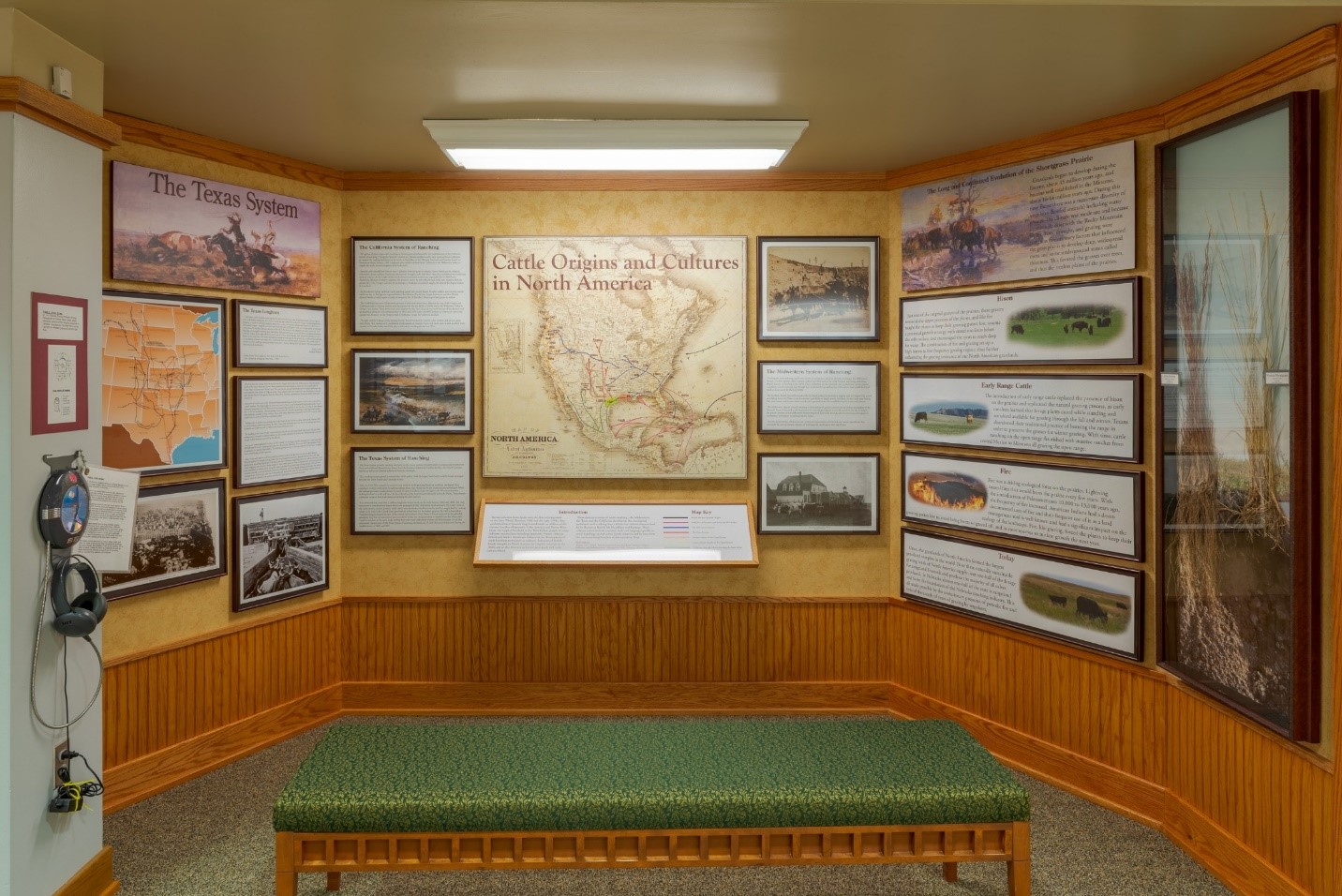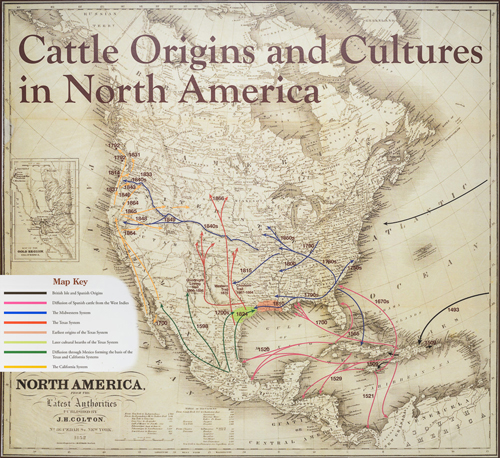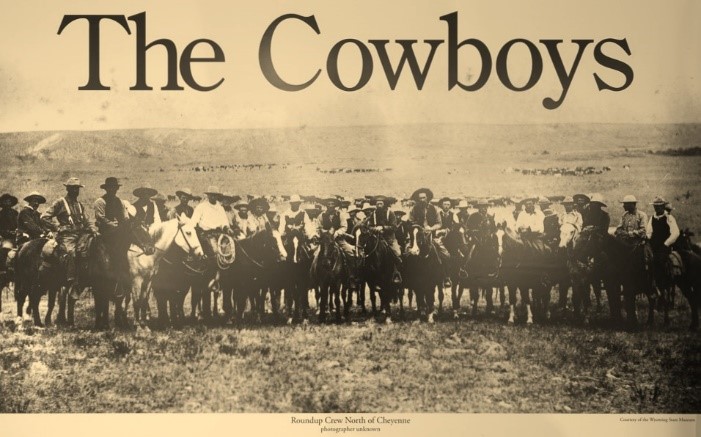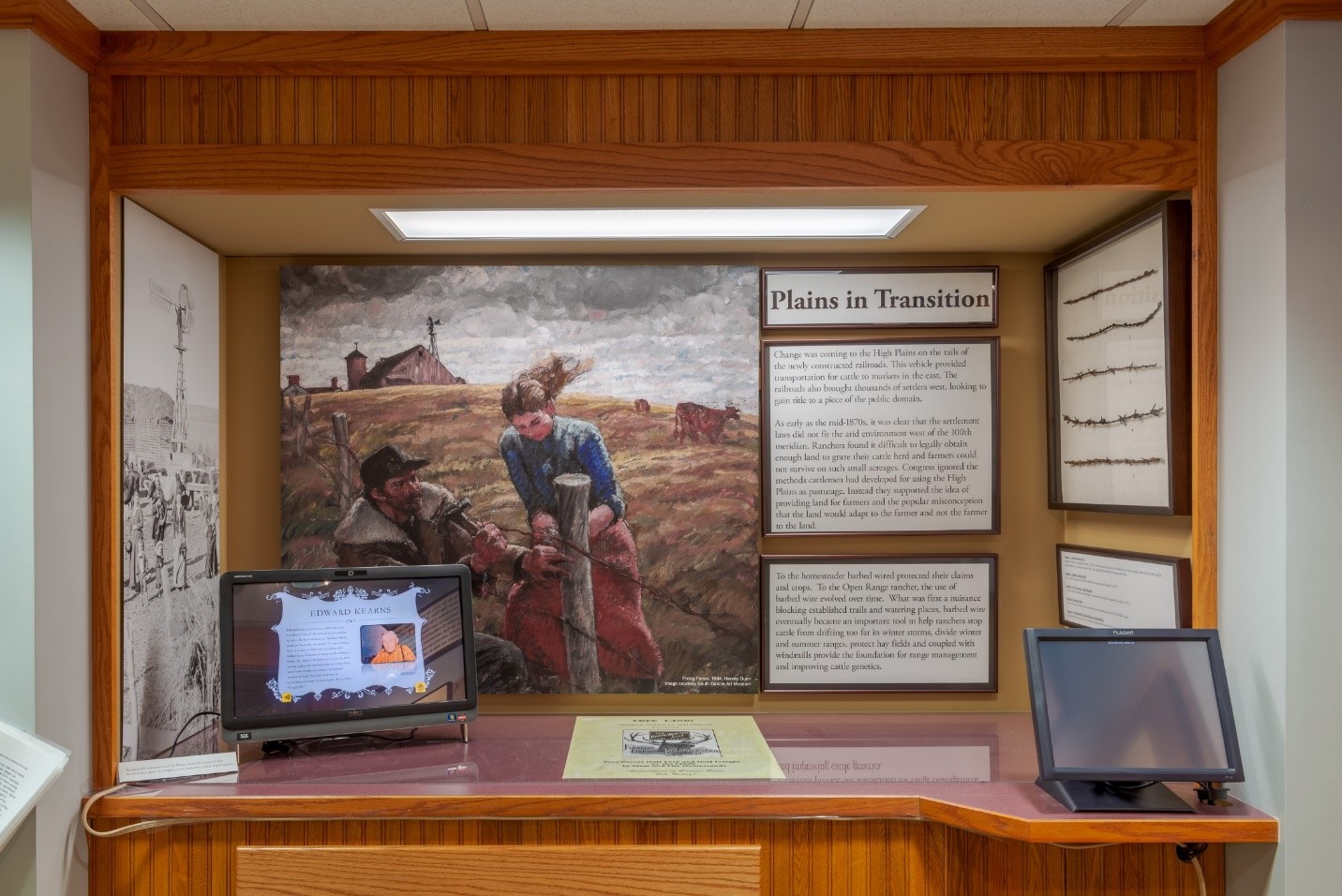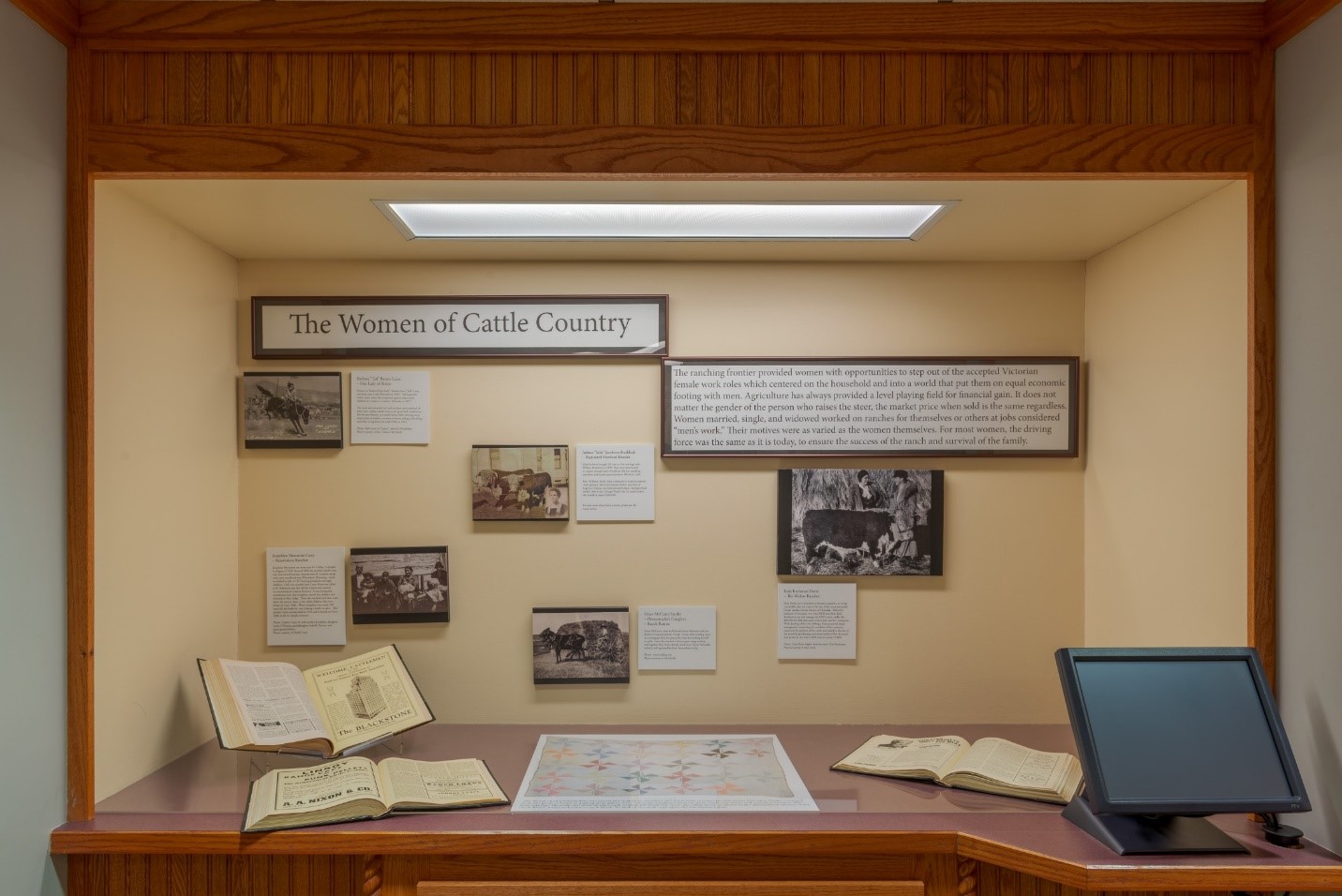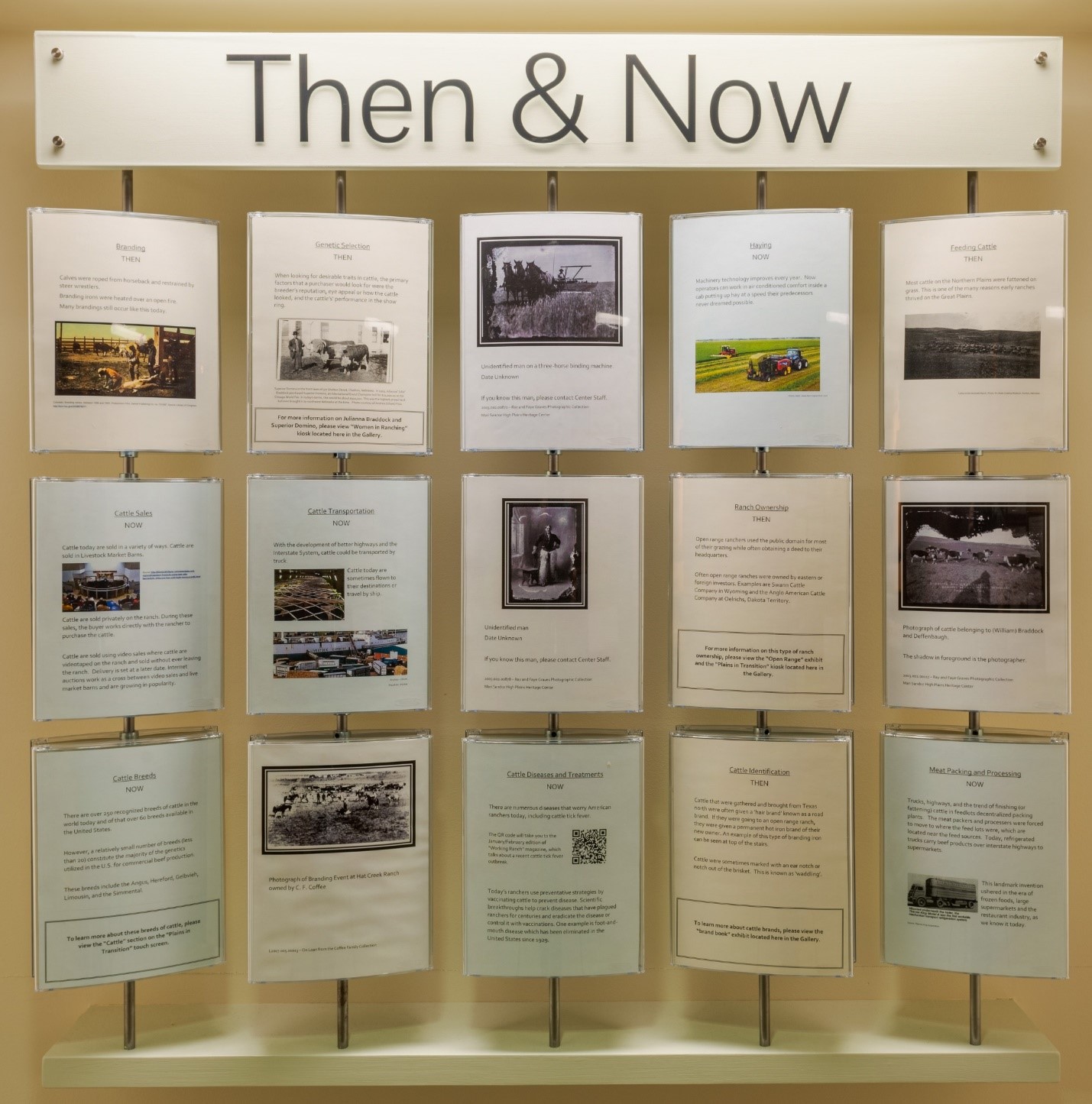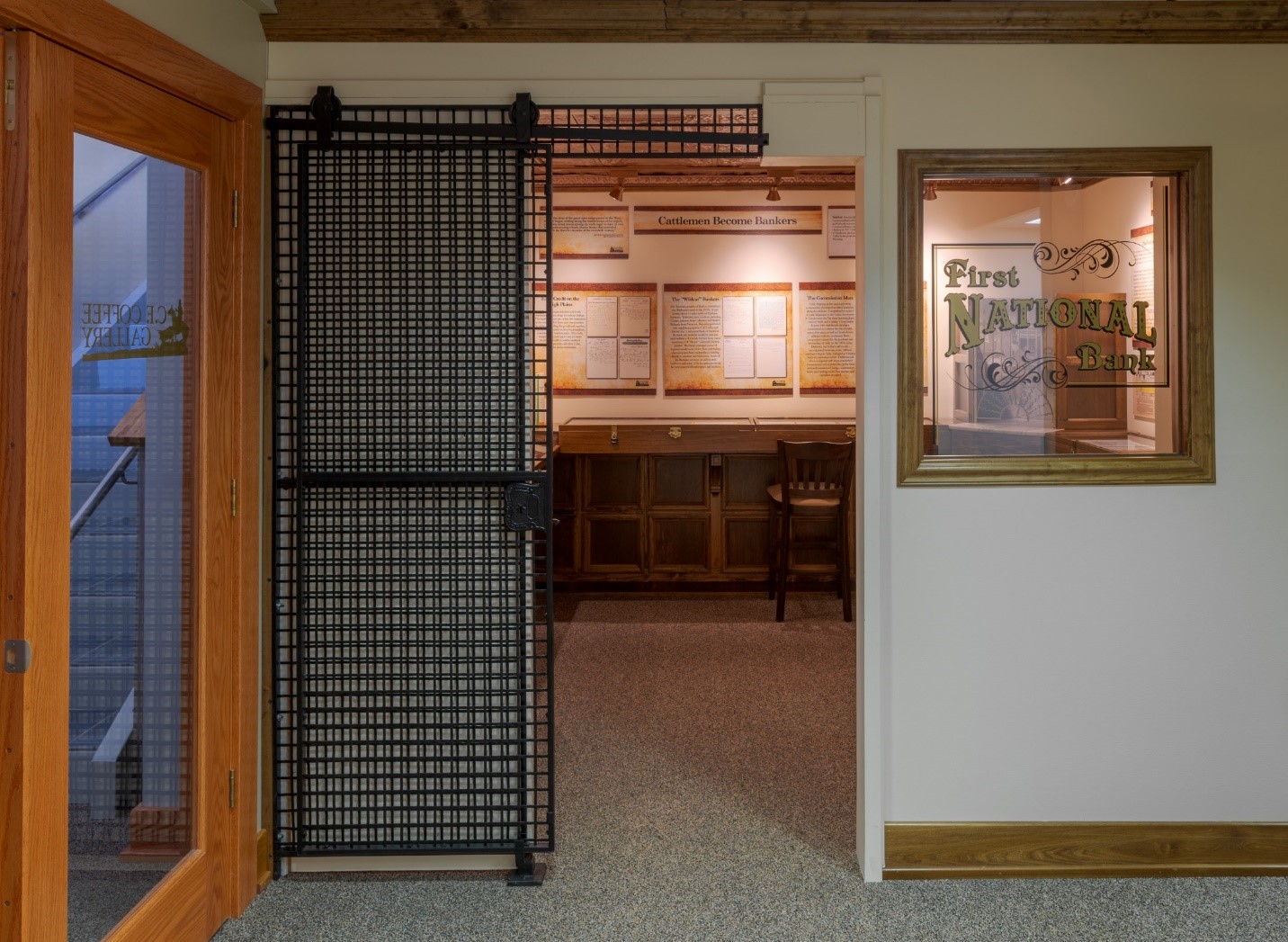Dedicated to the Ranching Heritage of the High Plains
The C. F. Coffee Gallery is dedicated to the history of Cattle Ranching on the High Plains. Exhibits in the gallery space begin with the movement of cattle from Texas to the High Plains, the open range era, and the transition to the ranching system we know today.
The Coffee Gallery is the newest of the exhibit spaces and is still in development. The primary focus of the Gallery's work has been collecting archival resources for use by the students at Chadron State College and researchers from around the world. For more information about the archival resources available, please contact the Center.
Exhibits
Biographies & History
- Choose question
-
Biography of C.F. Coffee
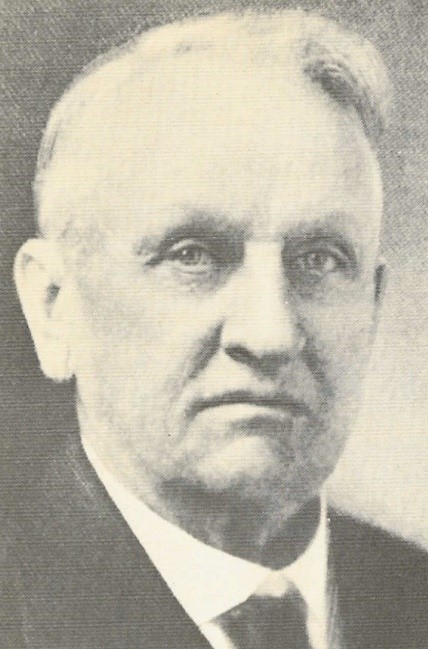
In 1871, C.F. Coffee hired on with his brother-in-law J.W. Snyder’s cattle drive as a $30 a month drover to trail a herd of 1500 cattle from Brownsville, Texas to Kearney, Nebraska. Two years later, he and partner, A.H. Webb borrowed approximately $13,000 at 24 percent interest to purchase their own herd. The cattle were driven to Wyoming where Coffee secured a contract with the US government to supply them with 60 beeves a month for a cost of $40 a head. Within two years the men had paid off the loan and Coffee had established a ranch on Box Elder Creek just south of the present site of Torrington, Wyoming. Early in 1872, Coffee and five other cattlemen met in a Cheyenne, Wyoming stable to draft the by-lines of the Wyoming Stock growers Association. C.F. Coffee had established himself as a cattleman.
In a letter written to the Wyoming Stock Growers Association in 1915, Coffee said he decided to move his herds into Nebraska in 1879, because the Wyoming region had become “too tame.” He drove his herds across the Nebraska/Wyoming border and settled them on Hat Creek approximately 12 miles north of the present site of Harrison, Nebraska. Coffee added the Durham bloodline from cattle obtained in Oregon in 1878, to improve his longhorn herd. He built irrigation ditches, planted trees, and established a headquarters. When the surveyors arrived in 1882, they listed the Hat Creek Ranch as “Coffee’s Garden. “
Coffee had traveled to Camden, Arkansas in April of 1879 and married his “Daisy,” second cousin, Virginia Ashland Toney, but his young bride set up housekeeping in Cheyenne, Wyoming and for many years, Coffee commuted the 150 miles between his ranch and his home. Eight years later, after drought and snow decimated cattle herds on the Great Plains, his wife and three young children moved to the ranch. Daisy quickly settled her family into the community. The couple welcomed neighbors, helped finance the building of the local church, and joined other community members in Fourth of July celebrations and Christmas parties.
Known, throughout his life time, as a progressive cattleman and community leader, Coffee continued to diversify his cattle breeding program, he helped establish the Nebraska Stock growers Association, built a railroad siding that made shipping cattle to eastern markets easier and cheaper, and helped establish the Omaha Stock Yards. In 1889 Coffee purchased the Commercial Bank in Harrison. Less than ten years later, he traded friend and fellow-rancher ,Bartlett Richards, 2000 cows with calves at side for controlling interest in the First National Bank in Chadron, NE. On September 7, 1900, the Dawes County Journal reported that Charles Coffee would be named as vice president of the First National Bank. In time, he’d have an interest in all but one of the banks from Lusk, Wyoming to Gordon, Nebraska.
Coffee served one term in the Nebraska House of Representatives. He was instrumental in securing Chadron State College for the Panhandle, and throughout his lifetime he continued to support and improve both the banking and the ranching industries. When Coffee died in 1935, E.P. Wilson, Professor of History at the Nebraska State Teacher’s College at Chadron noted that, “It will not be possible fifty or one hundred years from now to write the pioneer history of Eastern Wyoming or Western Nebraska without recognizing Colonel Coffee’s far reaching influence…” The National Cowboy Hall of Fame confirmed Coffee’s influence by inducting him into the Cowboy Hall of Fame in 1966.
Over 60 years later Wilson’s prediction continues to hold true. Coffee’s original Hat Creek Ranch is still owned by his family. The First National Bank, although no longer owned by the Coffee family, is a strong viable institution that continues to follow C.F. Coffee’s financial ideals, and C.F. Coffee continues to be recognized in American history as one of the men who established the industry that supplies the world with beef.
-
Harry Oelrichs and the Anglo American Cattle Company, Ltd.
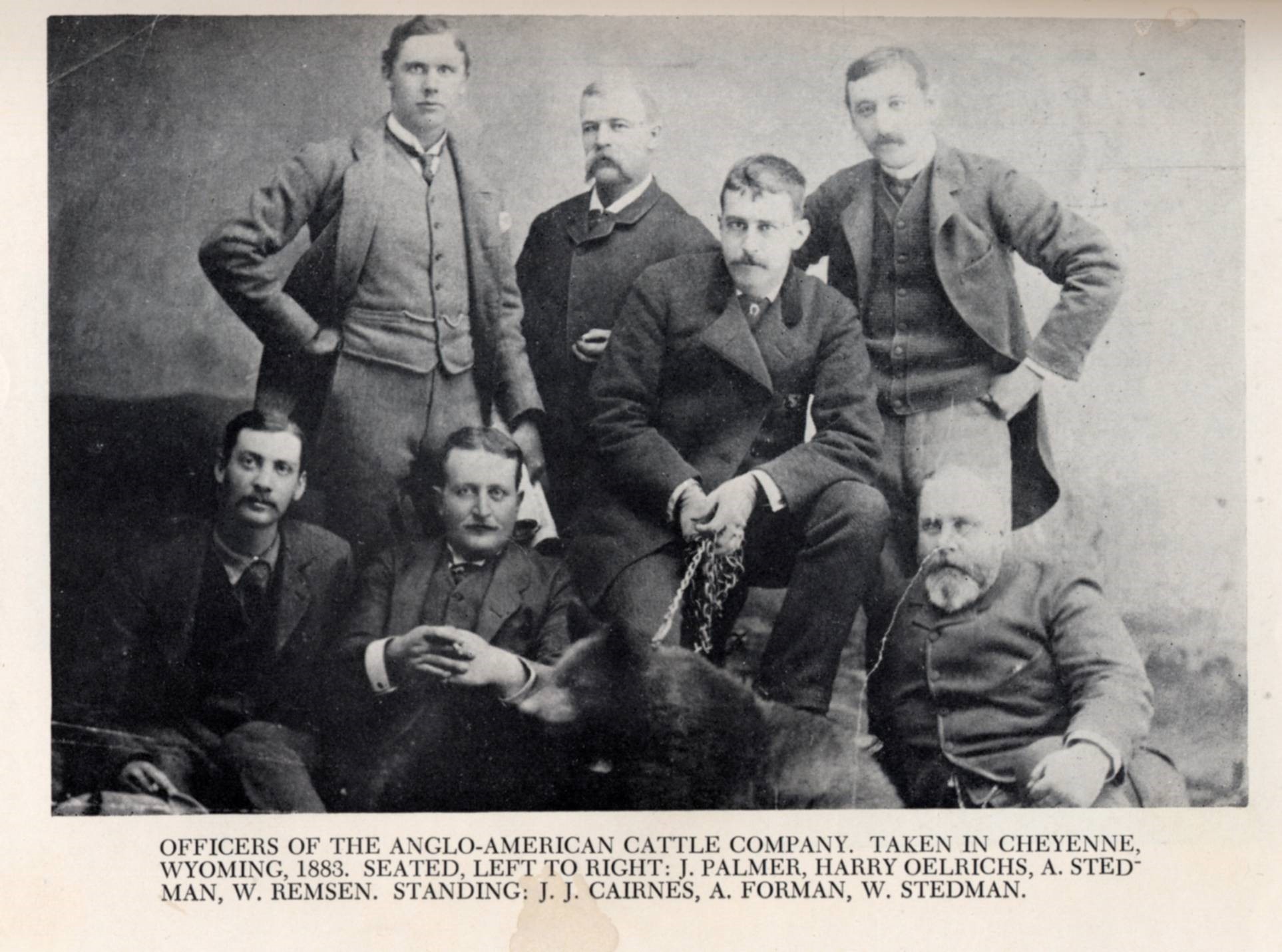
Great Britain’s foray into American cattle ranching was spurred into existence because of a lack of beef in England due to the decimation of British herds by foot and mouth disease. In the spring of 1879 the first of the great British cattle corporations, the Anglo-American Cattle Co., Ltd. was organized in London and the new enterprise quickly set about purchasing ranches and cattle in the American west. Some of their livestock was purchased from the International Cattle Company of Wyoming then managed by Harry Oelrichs, a wealthy, young lawyer from New York . Oelrichs became an investor in the Anglo-American Cattle Co. and was hired as the general manager in America. With Harry Oelrichs at the helm, by 1882 the Anglo-American Cattle Company became the largest owner of cattle in Dakota after purchasing the TOT Ranch based near the present town of Edgemont, South Dakota, the Bar T Ranch along Hat Creek and the TAN Ranch located near the present site of Oelrichs, South Dakota. When Oelrichs was unsuccessful negotiating a contract to sell meat to the federal government for reservation beef issue, he focused on fattening and processing cattle for markets in the Black Hills and eastern United States. He constructed a partially underground feedlot where steers enclosed in individual stalls were fattened on corn.

A processing plant was built near a spur line of the railroad with two large ice houses that were filled with ice cut from a from a pond on Horsehead Creek. The processing plant was in operation less than two years before closing. Two factors made the cost of producing the meat higher than expected; the high cost of buying and shipping feed to the feedlot and the lack of refrigerated box cars which forced Oelrichs to purchase ice at staggering fees along the route east. The railroad, the vehicle that was expected to make the feed yards and processing plant a success, hastened the demise of the Anglo American Cattle Company. While providing transportation to markets for beef and live cattle it also brought in thousands of people looking for land. As the homesteaders enclosed their claims with wire, the cattle of the Anglo-American Cattle Company were cut off from grazing and water. This coupled with the decline in cattle prices and the devastating death loss of cattle in the winter of 1886-1887 brought an end to the British based company.
In 1893 the Anglo American Cattle Company folded and J.J. Cairnes an Englishman who was the general manager of the company in its’ last years, purchased the remaining breeding stock and moved them to the Sand Hills of Nebraska where he was a partner with Bartlett Richards in another ranching venture.
-
Bartlett Richards - Predicting the Future of Public Land Use in the West
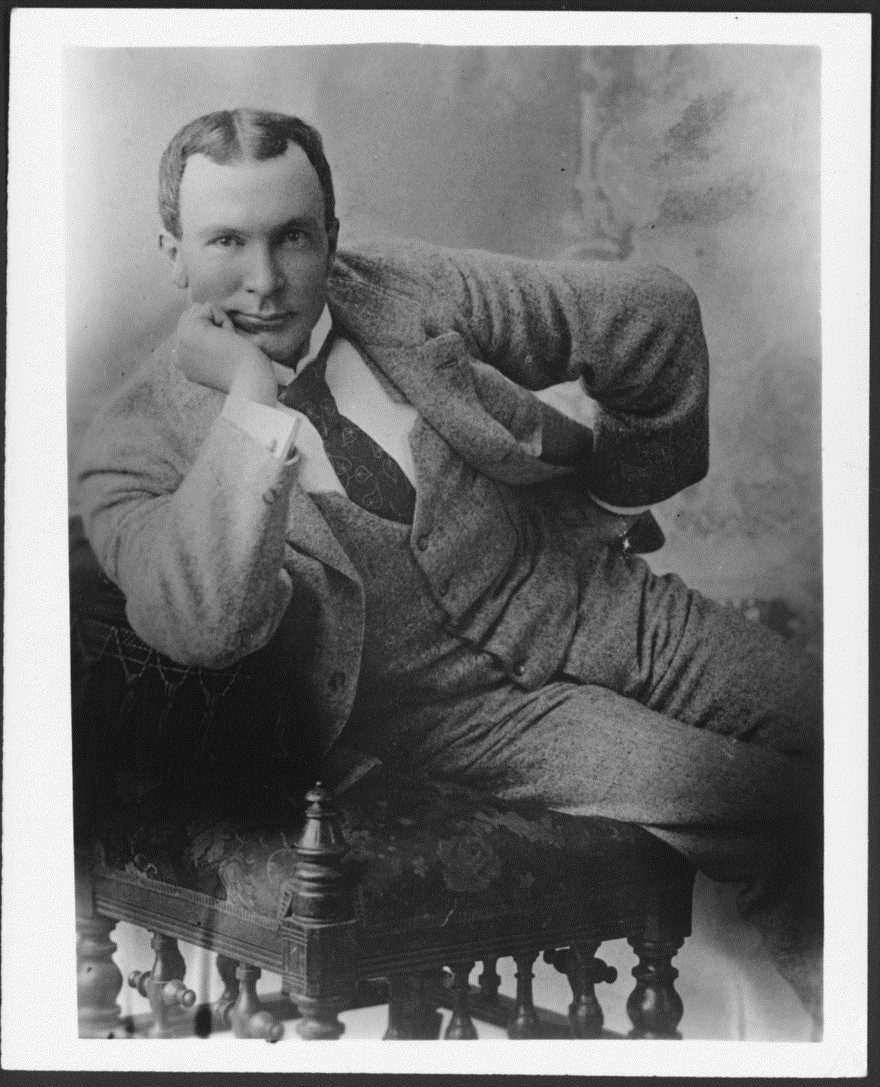
Barlett Richards owner of the Spade Ranch
Late in the summer of 1879, Bartlett Richards a young man from Vermont arrived in Cheyenne, Wyoming. Richards started his journey to building a ranching empire in the American West as a cowhand that first summer, working on a ranch 80 miles north of Cheyenne. By September he was soliciting eastern financing to purchase his own cattle which he used to establish the Ship Wheel Ranch along the Belle Fourche River in northeastern Wyoming. For a time he operated the Lakotah Cattle Co. on the Upper and Lower 33 Ranch and also partnered with his brother DeForest Richards and Walter Brown in 1885 to establish a bank in Chadron.
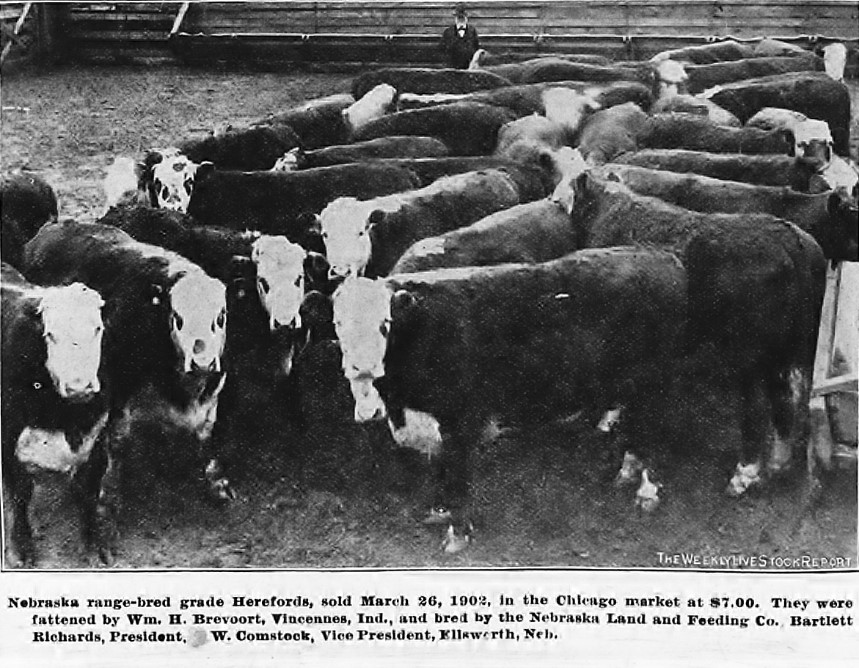
The severe winter of 1886-1887 led to extensive loss of cattle and Richards sought new ranges with better protection in the Sand Hills of Nebraska. He partnered with Englishman J.J. Cairnes and formed the Spade Ranch with headquarters at Ellsworth. Cairnes left the partnership and the Nebraska Land and Feeding Company was established by Richards, his brother Jarvis and a new partner Will Comstock. The harsh winters taught open range cattlemen the importance of having hay and winter grazing ranges both of which were impossible without fencing. Many ranches, like the Spade Ranch, owned valuable hay lands and watering places but grazed open range owned by the federal government. Fencing the range meant enclosing the public domain which was against the Van Wyck Act of 1885. Bartlett Richards and many other ranchers tried unsuccessfully to get Congress to pass land-lease legislation such as the Bowersock Bill which made federal land west of the 100th meridian available for ten year lease for grazing purposes subject to homesteading and mineral entry.
In 1902 President Teddy Roosevelt focused his attention on forcing those who had fenced public domain to remove the fences. In 1904 Richards, Comstock and several others were indicted for erecting illegal fences. In a plea bargain agreement, they pled guilty and testified they were in the process of removing the illegal fences. As it became apparent that the land lease bill was not going to succeed, Richards and Comstock took advantage of loop holes in the Kinkaid Act (1904) to obtain legal title to federal land used by the Spade Ranch. A grand jury viewed this activity as fraudulent and returned a 38 count indictment against Richards, Comstock and their associates in 1906. Both Richards and Comstock were ordered to serve one year in prison and pay a fine of $1500.00. Bartlett Richards did not finish his sentence as he became seriously ill and died on Sept. 4, 1911.
-
H.M. Rea Diary- American Heritage Center, University of Wyoming
In 1884 Henry Rea, a young man from Keelville, Kansas began an adventure of a lifetime trailing a herd of cattle from Ogalalla, Nebraska to Johnson County Wyoming. Rea was like many young men looking for adventure beyond the everyday drudgery of work on the family farm but he was different than most young cowboys because he kept a journal. Because Rea took the time to write his daily activities in a small 3”x6” notebook we can re-live the events of life on a cattle drive.
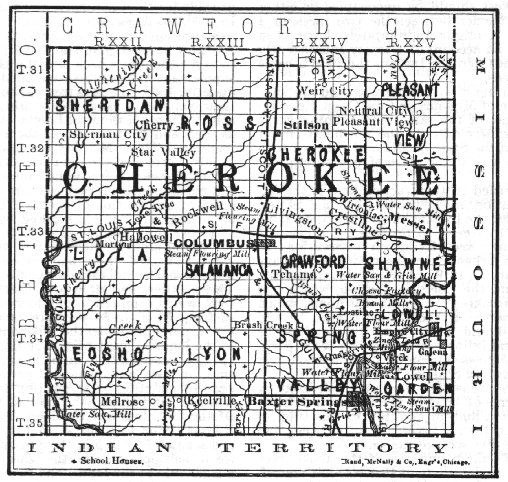
Named for the Cherokee Indian tribe, who by a treaty signed in 1835 held the 'Cherokee Neutral Lands,' a strip 50 miles north to south and 25 miles across, comprising all of Cherokee, most of Crawford, and a slice of Bourbon County. In 1866, another treaty ceded the Neutral Lands to the United States
Interviews
- Choose question
-
Elvin Adamson
Elvin Adamson was the grandson of Dan Adamson, who compiled a great deal of information about ranching in the Sandhills and published many stories about his experiences in the Nebraska Cattleman magazine, and copies of those stories are archived in the C. F. Coffee Gallery at Chadron State College. Dan Adamson’s family said he also supplied the idea for what became the Kincaid Act to Senator Moses Kincaid. Mr. Adamson’s interview includes stories about his own years as a Nebraska Senator.
-
Ethel Anderson
Ethel Anderson and her brothers grew up and later ranched near both the Spade and Sandoz ranches. Mrs. Anderson’s interview includes very detailed stories about childhood in the Sandhills. Her brothers join her for part of the interview and talk about their memories of the Sandoz family.
-
Theodore Anderson
Theodore Anderson was the village blacksmith in Gordon for more than 60 years shoeing horses, sharpening plows and lathes, and fixing wagon wheels from 1904 until he retired in 1965. Mr. Anderson learned his trade in Denmark, where he was born in 1885, and he became widely known for his forge work in Gordon.
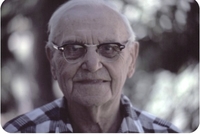
-
Jean Coffee Baker
Jean Coffee Baker is the granddaughter of Buff Coffee, the great-niece of C.F. Coffee. Her collection contains pictures of the Lickitt ranch and its branding, Hat Creek ranch, the First National Bank of Chadron, Blanche, Frank Coffee, Junior Coffee, Lizzy (Elizabeth), Buff Coffee, Guy, Harry, and Rex Coffee.
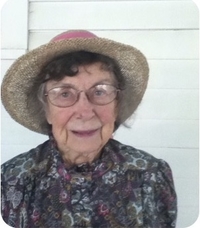
-
Bret Bixby
Bret Bixby talks about haying on the Spade Ranch and his memories of his grandfather’s ranching operation. His grandfather, Lawrence Bixby, bought a portion of the Spade Ranch including the headquarters from Brass and Meyers who had acquired it from Bartlett Richards’ family in 1923. Bret also explains that his great-uncle, Winifred Bixby, was a businessman who had the means to buy a good camera like that used to take the 16mm footage. He also talks about some of the people who lived near the Spade.
-
Larry and Marg Bixby
Larry Bixby’s father, Lawrence Bixby, bought a portion of the Spade ranch including the headquarters from Brass and Meyers who had acquired it from Bartlett Richards’ family in 1923. Larry talks about his father’s determination to rebuild the Spade Ranch to its glory days. He discusses the video footage shot by his uncle, Winifred, that contains some rare footage of a 32-horse hitch moving haystack down a Sandhills meadow. He also discusses his desire to eliminate the use of “horse labor” on the Spade ranch and replace it with mechanization.
-
Charles Brown
According to Charles Brown’s history that was presented to the ranch centennial celebration in 2002, his family came to the Sandhills in 1902 and purchased the mortgage assignment on a quarter section on Rush Creek. The Rush Creek Stock Company was formed and encompassed 8,000 acres of land that extended within four miles of Rushville. Charles’s grandfather, JE, purchased 3,000 ewes at a cost of a dollar each to stock the northern part of the place and put cattle on the southern lands. The interview Charles did with the students at the Glen School includes some of his memories of growing up in the Sandhills, but also includes information about his years with the U.S. military. Here is an excerpt about the visit written by Glen School eighth grader, Nick Buckley: “Three-Star General, Charles Brown, came to Glen, November 12. He is retired now and has a ranch in the Sandhills, but he was in three different wars before he retired. He was in Korea, Vietnam, and just before he retired he went to Kuwait during the Gulf War. He also served in the Pentagon with General Colin Powell, who is his friend. He said he got into the service because his father, who was in WWII, expected him to. He said he originally thought he’d serve one term in the military then come home to the family ranch. Instead he made a career of the military. He said he was glad that he did. He lived in many countries while he was in the service and liked exploring countries where he was stationed. He said all war is terrible, but that it would be much worse to see our country overrun by an enemy. He said he thought it was right to be fighting in Iraq right now, because Iraq is in the middle of the countries involved in terrorism. The Glen School students were very glad General Brown came to our school. By Nick.”
-
Harlan Carpenter
Shortly after the first cattle arrived in the northern plains, rustlers arrived as well. Even though the newly arrived cattle were branded first with a “trail brand” and later by their owner’s brand, the rustlers found ways to change the brand and ran off with whole herds to sell in areas that didn’t pay much attention to brand inspection. Jerry Kennedy, who learned his trade from Harlan Carpenter, Gary Sandage and Coop Elwood, related many stories about the years they spent as brand inspectors
-
Lawrence Cross
While the pioneers had to learn how to live off the land, the Plains Indians had known for centuries. “There was always a lot of food in the world for us,” recalls Lawrence Cross, a Sioux Indian who was born on the Pine Ridge Reservation in 1900. Mr. Cross, whose father was an Army scout at Fort Robinson before the turn of the century, served in World War I and World War II and then moved in 1943 to Crawford where he lived the rest of his life. His closing statements were among the highlights of the 1974 Fort Robinson Centennial Ceremonies.
